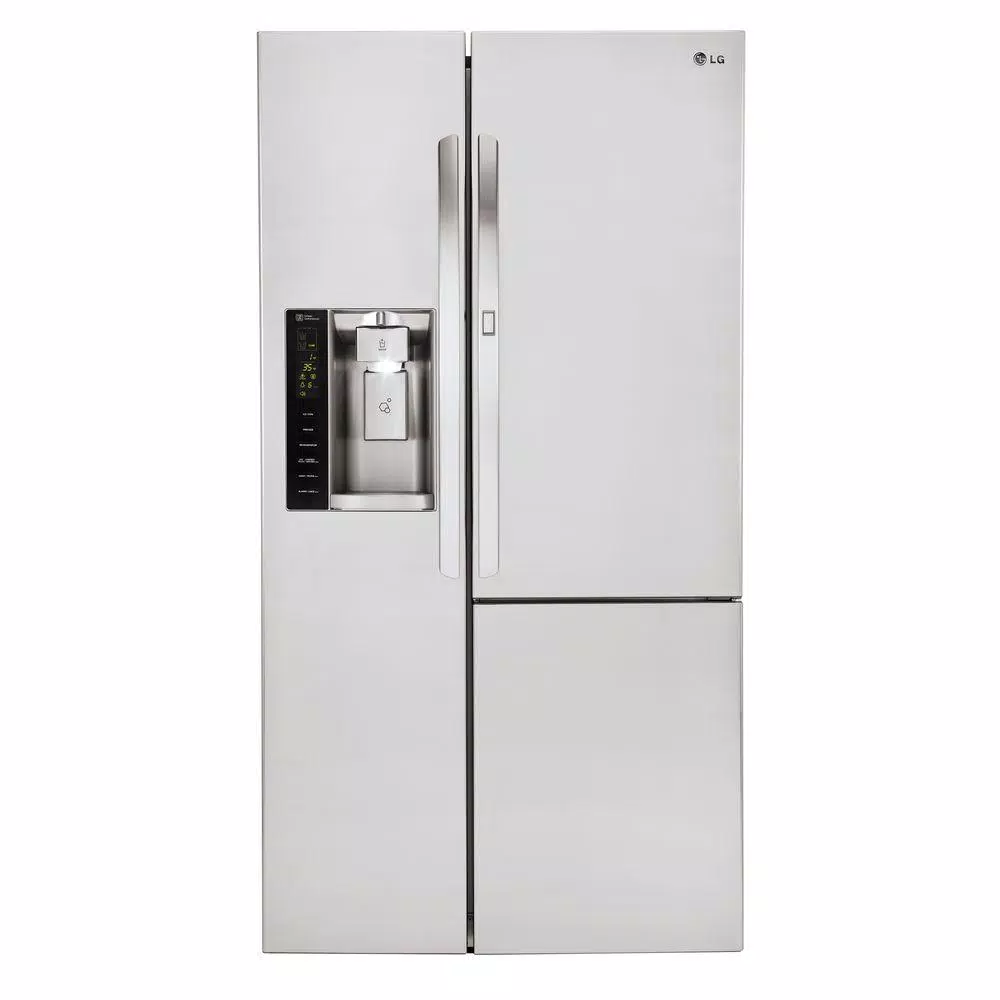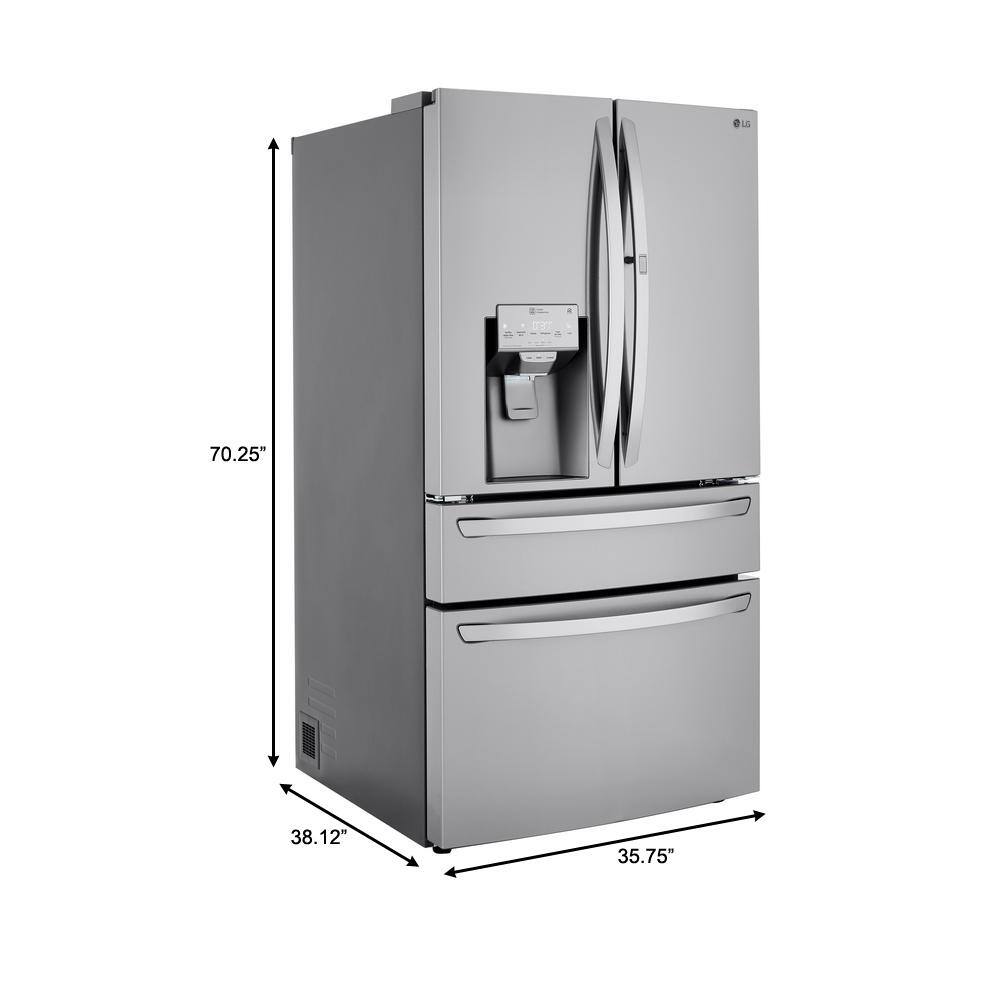GE 22.1 cu. ft. French Door Refrigerator in Fingerprint Resistant Stainless Steel, Counter Depth and ENERGY STAR
Counter depth design creates a sleek built-in look. LED lighting makes items easy to spot and retrieve. Resists fingerprints and smudges for a clean sleek appearance.
At GE Appliances, we bring good things to life, by designing and building the world’s best appliances. Our goal is to help people improve their lives at home by providing quality appliances that were made for real life. Whether it’s enjoying the tradition of making meals from scratch or tackling a mountain of muddy jeans and soccer jerseys, GE Appliances are crafted to support any and every task in the home.
- Counter-depth design – offers a built-in look by fitting nearly flush with surrounding cabinetry
- Fingerprint resistant stainless – easily wipe away smudges and fingerprints for a look that’s always sparkling clean
- Space-saving icemaker – located on the door with integrated bins to create more usable storage space
- Second icemaker option – always have extra ice on hand with an optional second icemaker in the freezer (IM5D kit sold separately)
- Advanced water filtration uses RPWFE replacement filter – reduces trace pharmaceuticals from water and ice (removes 98% of ibuprofen, atenolol, fluoxetine, progesterone and trimethoprim, these pharmaceuticals are not necessarily in all users’ water)
- Showcase LED lighting – positioned throughout the interior and under fresh food doors to spotlight foods inside the refrigerator and in the freezer
- TwinChill evaporators – separate climates in the fresh food and freezer sections help keep foods fresh
- 2 humidity-controlled drawers and full-width drawer with LED light – create the right environment for keeping fruits and vegetables fresh, while easily storing wider items like a party platter or a sheet cake
- Turbo cool and turbo freeze settings – an extra boost of cold air restores interior to set temperature for optimum food freshness
- Tall dispenser – makes and stores ice in the door, saving space
- Door alarm – enjoy peace of mind knowing the refrigerator door is never left open
- 2-level freezer storage baskets – baskets allow easy access to frozen foods
- Gallon door storage – deep bins handle large containers in the door and free up valuable shelf space
- External controls with actual temperature display, child lock and door alarm – eliminates the guesswork in setting refrigerator temperatures, conveniently displayed on the dispenser
- Cubed/crushed ice – an easy-to-use dispenser lets you choose either cubed or crushed ice
- Spill-proof shelves – a variety of shelf configurations provide additional options for food storage
- Approximate dimensions (in.) – 70-1/2 in. H x 35-3/4 in. W x 31-1/4 in. D
- Limited 1-year entire appliance warranty
- Energy Star
Additional information
| Depth (Excluding Handles) | 29.75 in |
|---|---|
| Depth (Including Handles) | 31.25 in |
| Depth (Less Door) | 24.375 |
| Depth With Door Open 90 Degrees (In) | 43.375 |
| Height to Top of Door Hinge (in.) | 70.5 |
| Height to Top of Refrigerator (in.) | 69 |
| Product Depth x Height x Width (in.) | 31.25 x 70.5 x 35.75 |
| Refrigerator Width (In.) | 35.75 |
| Certifications and Listings | ADA Compliant,Energy Star,UL Listed |
| Manufacturer Warranty | Limited 1-year entire appliance |






by Carole
Nice fridge over all. Easy access to the water filter makes changing it a breeze. The only con for me, not the fridge, is I got the counter depth model and it is very small inside.
by Socal
Refrigerator was put online 2/25/2022 Will update as needed. So far so good Had an LG that lasted 5 years…..Also had a Samsung (as a 2nd Refrigerator that lasted 3 years). Never again with those brands….hopefully this model lasts longer.
by Mary
I love this refrigerator. I like the space, and the ease with the doors. I like the pullout freezer on the bottom. I had a side by side and so glad I switched.
by Sheri
We have this fridge for little over a month. We love it so far. Most of all we love the room we have inside and rarely fill it to capacity because of the space. The French doors allow ease of access to put platters and trays which was impossible with the side by side we had previously. The fingerprint resistant stainless steel is to be believed so the refrigerator always looks clean. Very easy to clean as well. No complaints yet.